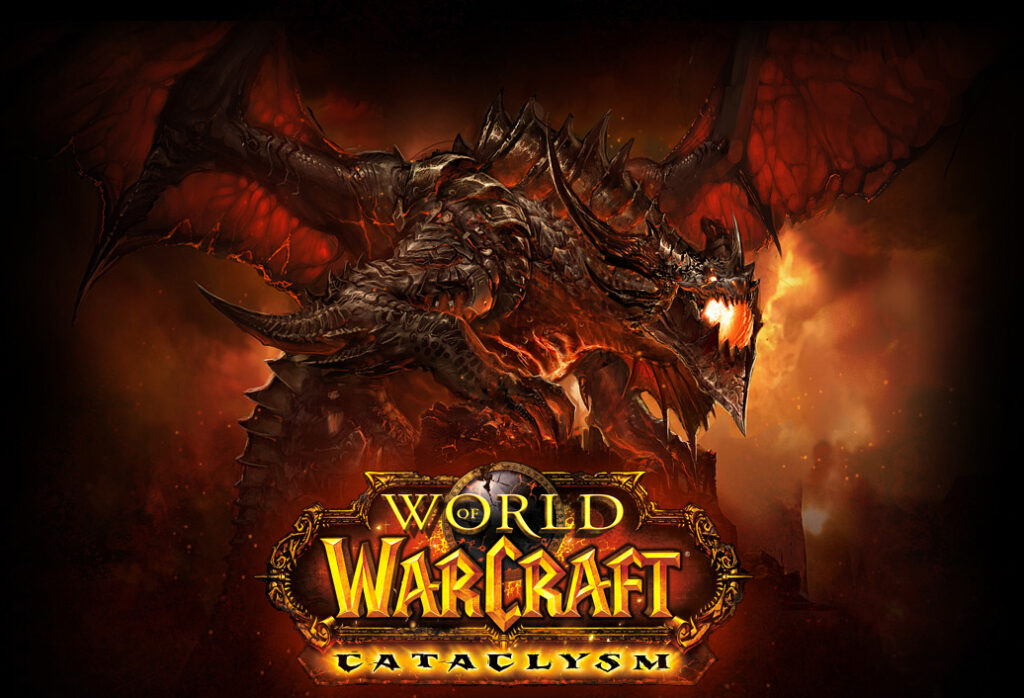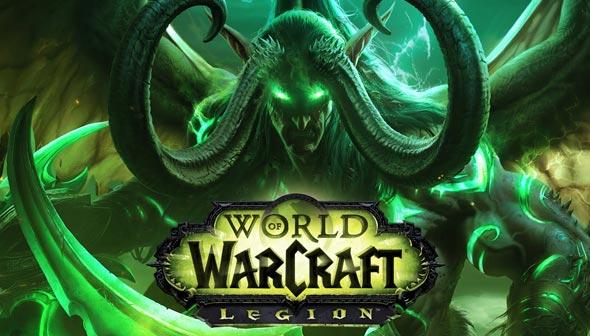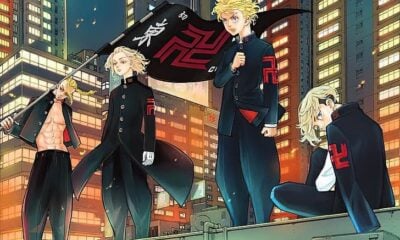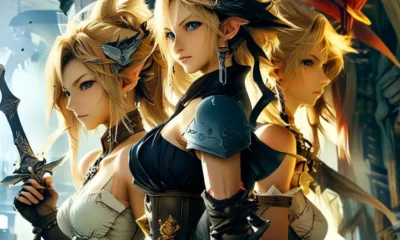Features
Ranking the World of Warcraft Expansions

What is the best World of Warcraft expansion?
We’ve turned a new page in the history of Blizzard’s decade-spanning MMO World of Warcraft, giving the long-running saga of Azeroth a fresh injection of life with the release of their most recent expansion, Shadowlands. As we move forward into the vast undiscovered country, it may also be worth remembering how we came this far; the failures and triumphs that have paved the way for World of Warcraft to dominate the MMO market for the last sixteen years. From the glory days to the darkest hours, we’re turning back the clock on Blizzard’s industry-defining goliath, one expansion at a time.
8. Warlords of Draenor

While a fun idea in concept (time-traveling to all of Warcraft’s greatest hits a la Avengers: Endgame), Warlords of Draenor proved to be little more than a quagmire of stale design. The leveling process was decent, though felt wholly routine and a bit too “safe,” the 5-man dungeon content was a bland mix of inoffensive and unremarkable, and the later raid content felt uninspired at best. The expansion’s big new feature, player-controlled garrisons, quickly came to feel like a large checklist of all too familiar rinse & repeat quests to be filled out every week; something more akin to a series of chores as opposed to engaging content.
Warlords of Draenor falls into that unfortunate gray area of being a widely unmemorable experience, neither failing nor succeeding in any one area due largely to a “play it safe” mentality with an overwhelming aversion to taking risks. Say what you will about some of the less successful features in Battle for Azeroth or Cataclysm, at least their larger failures are emblematic of having tried something new.
7. Battle for Azeroth

If Warlords of Draenor was playing things too safe, Battle for Azeroth may have tipped the scales a bit too far in the other direction. Bringing a whole jumble of new progression mechanics over its lifespan, Battle for Azeroth quickly became a bloated hodge-podge of ideas; some good, some bad, and some extraneous. Azerite traits, while an interesting idea (your equipment has dynamic talents, basically), often resulted in your old gear being superior to supposed upgrades due to poor RNG on the talents your “upgraded” new gear would roll. The Heart of Azeroth traits that unlocked in the later stages of Battle for Azeroth were also an interesting concept, a sort of “build your own mini-talent-tree” system, though the number of viable late-game builds were quickly whittled down to a strict meta.
Dungeon content and leveling areas varied wildly in quality, structured PvP felt sidelined in favor of the admittedly decent open-world “War Mode”, and the various raids across its tenure were just as scatter-shot as the small scale content. An overabundance of mechanics and a lack of focus ultimately came to define Battle for Azeroth, leaving players with a convoluted and messy expansion whose reach often exceeded its grasp.
6. Cataclysm

Taking the “everything old is new” approach, Cataclysm stepped up to the plate with the unenviable task of having to follow up the smashing success of its predecessor, Wrath of the Lich King. Shackled with those kinds of expectations, Cataclysm couldn’t help but underwhelm in the long shadow of what came before, but it still proved a solid effort in its own right (the Return of the Jedi syndrome, if you will). With a focus on giving dusty old Azeroth a more modern face lift, the expansion’s antagonist, Deathwing, saw to reshape the classic leveling zones and dungeons we had grown accustomed to since launch. A revitalized leveling experience worked well to complement the introduction of two new races, and the extreme makeover of old areas gave Azeroth a refreshing change of scenery.
While Cataclysm’s ‘earnest’ approach to raid content yielded some interesting results (the Spine of Deathwing encounter remains a high watermark in terms of sheer creativity), it’s clear Blizzard felt they had to take a much more unorthodox approach in their attempt to live up to the unfathomable expectations on their shoulders. While it would be fair to say that Cataclysm didn’t always hit the mark, much of its less-than-stellar reputation seems to stem from falling short of the impossibly high bar set before it.
5. Legion

Whatever criticism Cataclysm may have received for being an underwhelming follow-up, Legion may well have received the inverse. Graced with the far less monumental task of picking up where the relentlessly mediocre Warlords of Draenor left off, it didn’t take much for Legion to feel like a breath of fresh air. Adopting a decent mix of Blizzard’s solid fundamentals and a handful of new ideas, Legion managed to maintain a respectable foundation over the course of its stay. While some of the new mechanics were certainly divisive, the core concepts behind them signaled steps in a positive direction.
Sure, Class Halls were basically Garrisons with some of the rough edges sanded off, but their class-specific focus at least showed that Blizzard was listening and attempting to bring back more unique class-based content. In that same vein, the heirloom weapons were a point of contention from both a lore and progression perspective (being locked into a single weapon for an entire expansion is a tough sell, even on paper), but the talent trees baked into the artifact weapons offered a clear and tangible sense of progression at level cap entirely unreliant on RNG, which is certainly commendable. As far as new classes go, Demon Hunters offered a new spin on melee with unparalleled mobility and a nifty glide mechanic, even if their rotation felt a bit bare-bones at launch. Perhaps Legion does score some “gimme” points for simply being a perfectly fine expansion off the heels of WoW’s low-point, but its merits only shine brighter in hindsight with the aforementioned sloppiness of Battle for Azeroth as its immediate successor.
4. World of Warcraft (Vanilla)

While not technically an ‘expansion,’ it’s hard to look back on the history of World of Warcraft without acknowledging where it all began. The vanilla experience holds such significance that the mere inclusion of “classic servers” in 2019 brought an influx of players large enough to peak the subscriber count in the neighborhood of late Wrath of the Lich King, the kind of numbers Blizzard hadn’t seen for multiple expansions.
Looking back, the original World of Warcraft is very much a product of its time. The leveling process was long and arduous, dungeons and raids were slow and methodical, and PvP was unbalanced in a way only a game of that generation could be. It’s a relic of an older time that focused less on streamlining to a fault and more on making an experience that was easy to get into but difficult to excel in. World of Warcraft was certainly more accessible to new players than EverQuest, its biggest competitor at the time, and that lower barrier of entry helped bring in a massive wave of new players to the genre. It was an important step forward for the medium of gaming as a whole, and the continued legacy of World of Warcraft and its echo on the entirety of the gaming industry after sixteen years serve as testament to that importance.
3. The Burning Crusade

With the frenzied zeitgeist surrounding the success of World of Warcraft’s launch, it was time for Blizzard to prove that this initial victory was no fluke. With the release of their first expansion, Blizzard’s sights were set high, and The Burning Crusade certainly delivered. Introducing players to a world completely alien to that of Azeroth, it was clear from our first steps through the Dark Portal that we were in for something special. From the shattered landscape of Hellfire Peninsula to the depths of Auchindoun and the rolling plains of Nagrand, the art direction of The Burning Crusade had one mission: give players something they’d never seen before.
Draenei and Blood Elves would find welcome homes in the Alliance and Horde respectively, and their gorgeous starting zones still hold up as some of the most memorable the game has ever seen (especially the Eversong Woods/Ghostlands). Small group content took a massive step forward, and class balance was improved without losing identity. The spirit of classic WoW was maintained while taking the game in an innovative new direction, and The Burning Crusade easily stands up as the kind of approach to game design that made Blizzard a definitive powerhouse in their heyday.
2. Mists of Pandaria

In the spirit of transparency, this article was written by a Monk main, so do with that information what you will.
If you could manage to dig your way through all the tirelessly recycled Kung Fu Panda jokes that surrounded the release of World of Warcraft’s fourth expansion, you’d have found a genuinely excellent and well-rounded experience in Mists of Pandaria. By adopting a vibrant color palette and a heavy Eastern influence, the setting of Pandaria offered a stark contrast to the muted browns, blues, and grays of Wrath of the Lich King as well as the dark, colder color palette of Cataclysm. The expansion’s dynamic economy and the pursuit of WoW Classic gold through new battlegrounds, a collection of suitably competent dungeons, and the fittingly epic and well-crafted Siege of Orgrimmar (among other solid raids), underscored Blizzard’s success in creating an expansion that felt both refreshingly new and fundamentally sound.
Along with WoW’s new ‘neutral’ race of the Pandaren came the game’s second new class: the versatile and long-requested Monk. Much like Death Knights before them, the Monk class boasted some interesting design decisions indicative of Blizzard’s attempts to bring something new to the table in terms of class design, most notably in the unique damage build-up and self-cleansing rotation of their tank specialization. Everything about Mists of Pandaria felt distinct and wonderfully creative, and though it came in the twilight years of WoW’s brightest era, it more than deserves to be considered as a badge of pride in the wider scope of the game’s greatest accomplishments.
1. Wrath of the Lich King

Coming as a surprise to absolutely no one, of course it’s Wrath of the Lich King; there’s a good reason it’s become such a cliche to claim it as Blizzard’s crowning achievement. Whether it’s the excellent dungeon design, the meticulous effort put into the world-building of Northrend, or the veritable “greatest hits album” of raid content, there truly is no contest. Wrath of the Lich King was Blizzard undoubtedly at the top of their craft, and so far no expansion has been able to follow in its daunting footsteps.
Long nights in Naxxramas spent perfecting the “safety dance”, the shock of your first time in Icecrown Citadel as Arthas wipes your entire raid in a scripted deathblow, rushing to the walls of Wintergrasp to enact your best rendition of Helm’s Deep… To talk about Wrath of the Lich King is to relive the fondest memories that come with World of Warcraft, and that feeling has never quite been matched, hard as they may try. Every aspect of what makes a great WoW expansion was firing on all cylinders; it was that perfect window of time where Blizzard still had the passion to create something groundbreaking combined with the experience of having made a large-scale expansion already under their belt. Much like taking that step from the classic experience into The Burning Crusade, the transition to Wrath of the Lich King was a massive leap forward for not only World of Warcraft, but for the genre as a whole; the bar had decidedly been set.
And now we find ourselves in Shadowlands. While it appears to have all of the trademarks of modern Blizzard so far (for better or worse), it’s far too early to tell how it will stand up to what has come before. So many of these expansions are seen in a whole new light through hindsight, and the full breadth of their impact can’t be measured without the context of everything surrounding them, before and after. Shadowlands has arrived at a defining moment for World of Warcraft, coming off of historically low subscription counts in an expansion that many players felt to be underwhelming at best in Battle for Azeroth. With a hemorrhaging subscriber base and other popular MMOs the likes of Final Fantasy 14 drawing their players away, this expansion could prove to be their swan song. So does Shadowlands have what it takes to rekindle this once mighty titan of its industry? As with all of the expansions before it, time will ultimately tell the tale. Perhaps Blizzard would do well to heed the warnings of Terenas Menethil II, as they themselves so eloquently wrote:
“No king rules forever, my son.”

-

 Features4 weeks ago
Features4 weeks agoDon’t Watch These 5 Fantasy Anime… Unless You Want to Be Obsessed
-

 Culture3 weeks ago
Culture3 weeks agoMultiplayer Online Gaming Communities Connect Players Across International Borders
-

 Features4 weeks ago
Features4 weeks ago“Even if it’s used a little, it’s fine”: Demon Slayer Star Shrugs Off AI Threat
-

 Features2 weeks ago
Features2 weeks agoBest Cross-Platform Games for PC, PS5, Xbox, and Switch
-

 Game Reviews4 weeks ago
Game Reviews4 weeks agoHow Overcooked! 2 Made Ruining Friendships Fun
-

 Features2 weeks ago
Features2 weeks agoThe End Is Near! Demon Slayer’s Final Arc Trailer Hints at a Battle of Legends
-

 Features3 weeks ago
Features3 weeks ago8 Video Games That Gradually Get Harder
-

 Features3 weeks ago
Features3 weeks agoDon’t Miss This: Tokyo Revengers’ ‘Three Titans’ Arc Is What Fans Have Waited For!
-

 Game Reviews4 weeks ago
Game Reviews4 weeks agoHow Persona 5 Royal Critiques the Cult of Success
-

 Guides3 weeks ago
Guides3 weeks agoHow to buy games on Steam without a credit card
-

 Game Reviews2 weeks ago
Game Reviews2 weeks agoFinal Fantasy VII Rebirth Review: A Worthy Successor?
-

 Uncategorized3 weeks ago
Uncategorized3 weeks agoSleep Meditation Music: The Key to Unwinding




